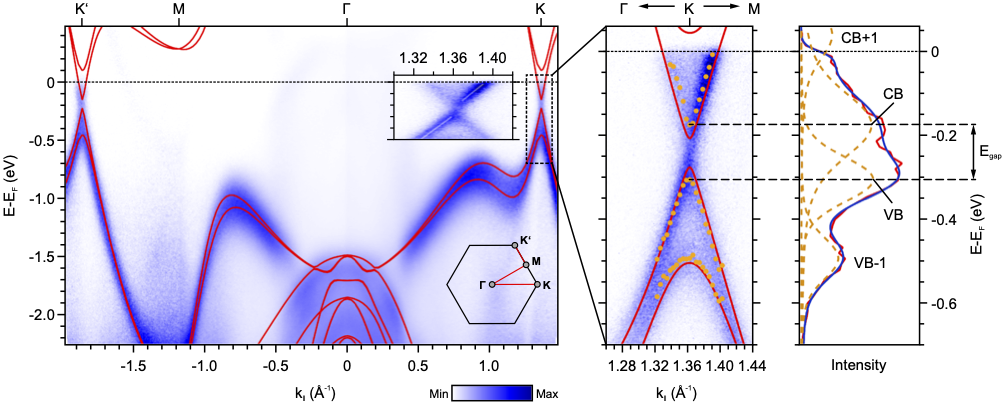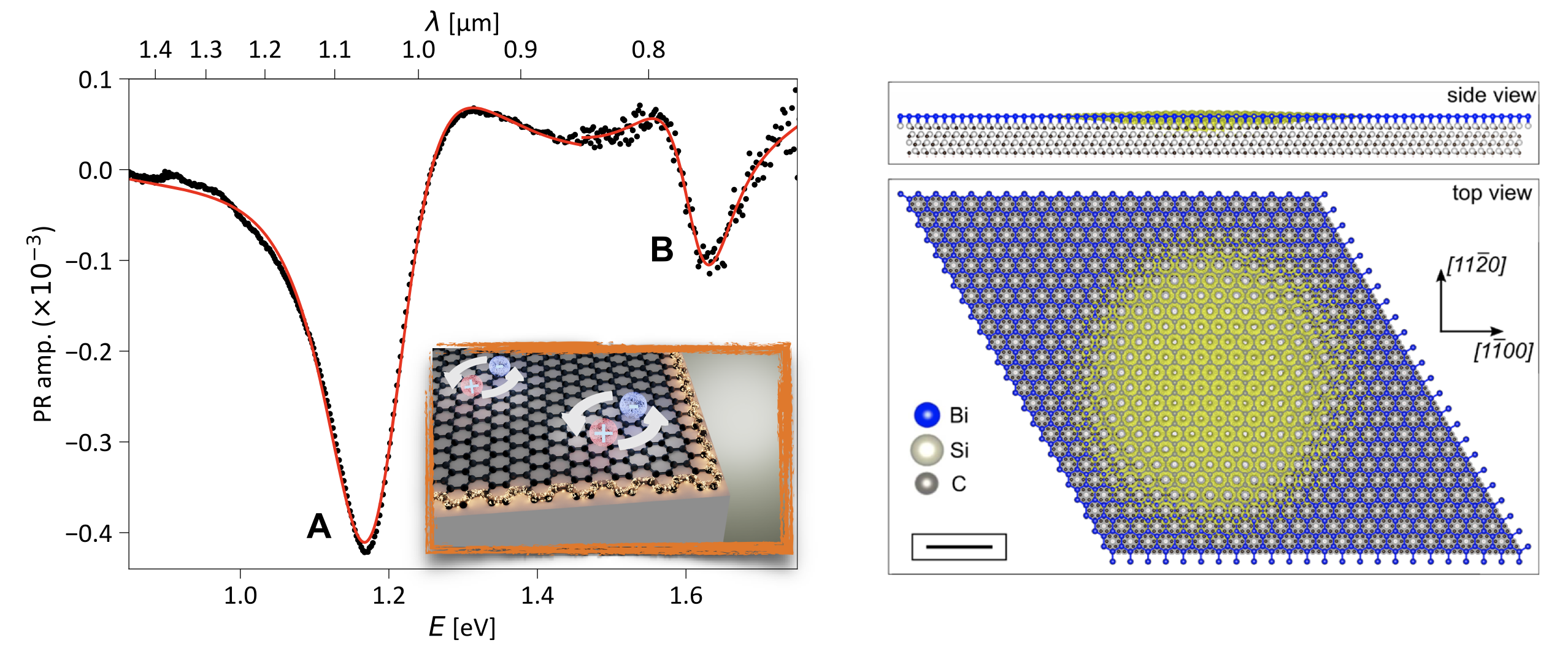new quantum materials in 2D
The strangeness of the quantum world in low-dimensions
Indenene: a triangular lattice with emerging honeycomb physics
We have conceived and realized a new quantum material: “Indenene”. It consists of a single layer of the chemical element Indium, and enriches the family of the so-called topological insulators.
The triangular lattice behind its tailor-made materials-design concept is not only novel in the context of topological quantum materials, but it also offers important advantages for future applications. Ever since the discovery of the first topological insulator, this class of materials has been attributed enormous potential for the development of future electronics going beyond state-of-the-art technology and possibly even for the realization of quantum computers.
The low-energy electronic properties of Indenene are well described by chiral orbitals on the triangular lattice sites. The honeycomb sublattice’s physics originates from the peculiar inversion symmetry breaking imposed by the underlying supporting substrate. The low-energy bandstructure, then, closely resembles that of heavy graphene, with a massive Dirac quasi-particle.

Indenene is also peculiar since it represents the first example of an “obstructed” topological insulator, for which the topological ground state cannot be described in terms of time-reversal symmetric localized Wannier functions. Moreover, the concept of obstruction is intimately linked to that of higher-order topology, and our devised model of chiral orbitals on the triangular lattice offers a perfect playground.

Divulgation and Outreach:
Triangular Honeycombs: Physicists design novel quantum material
Bismuthene and Topology - aka the secret sauce for exciting excitons
The physics of a quasiparticle called an exciton — responsible for transferring energy within devices such as solar cells and LEDs — has been understood for decades. In essence, excitons are excited particles that form when negatively charged electrons bind to positively charged holes. Electron correlations are the glue responsible for such a bound state. Besides excitons, electron correlation is at the heart of phenomena such as magnetism and superconductivity, and we aim to blend it seamlessly with topology, a new paradigm for quantum materials.
Topology and excitons have hitherto eluded a clear connection. Now we found the first evidence of an existing relationship. The protagonist of this research is Bimsuthene, the tycoon of topological insulators discovered in 2018 in Wuerzburg and a heavy sibling of graphene. Bismuthene features unique properties among topological insulators, such as a huge gap that allows for a tightly-bound exciton. The work relied on the first-ever optical excitation in a topological insulator and sought a connection between photonics and topological electronics. This research was made possible by marrying an outstanding experimental technique known as spatially-resolved photo-modulated reflectivity with cutting-edge many-body modeling.
The reported evidence of an exciton in a topological quantum material is the starting point for exploring the role of topology in optical applications. It stands as the first groundbreaking advance in understanding topology’s role in bound electron-hole pairs. Under this light, topology represents the “secret sauce” whose action still deserves future investigations but undoubtedly enriches the exciting field of excitons.
The work was supported by the Wuerzburg SFB ToCoTronics, the Wuerzburg-Dresden cluster of excellence ct.qmat, the Polish National Science Center, and of course the European Union’s Horizon 2020 research and innovation program wit my BITMAP project. The research is published in the journal Nature Communications.
